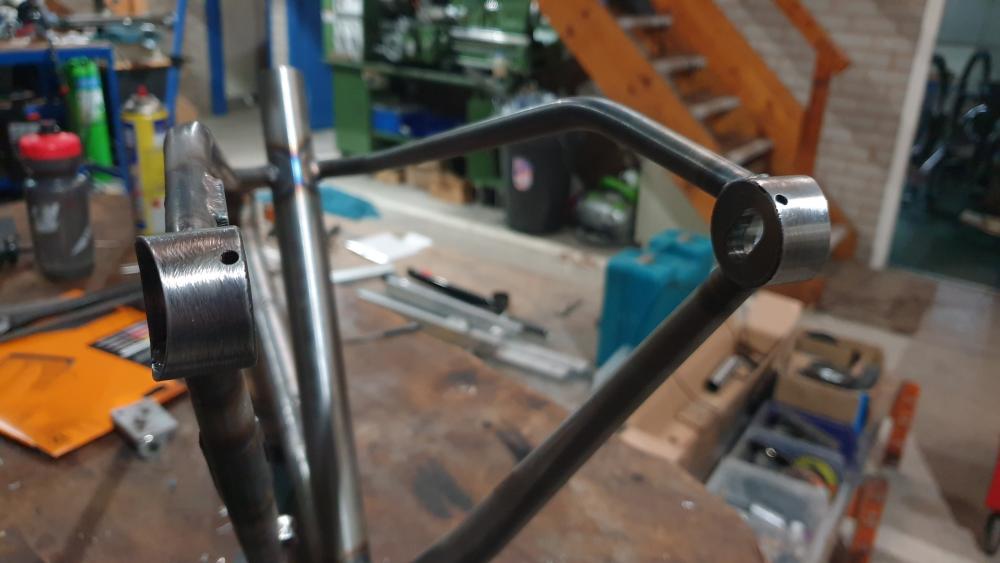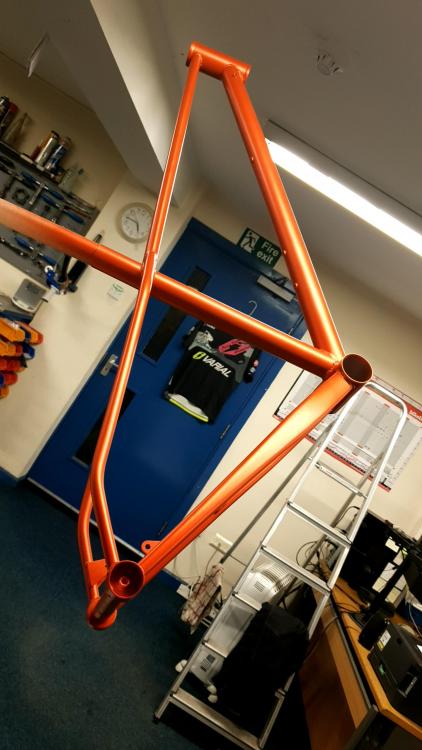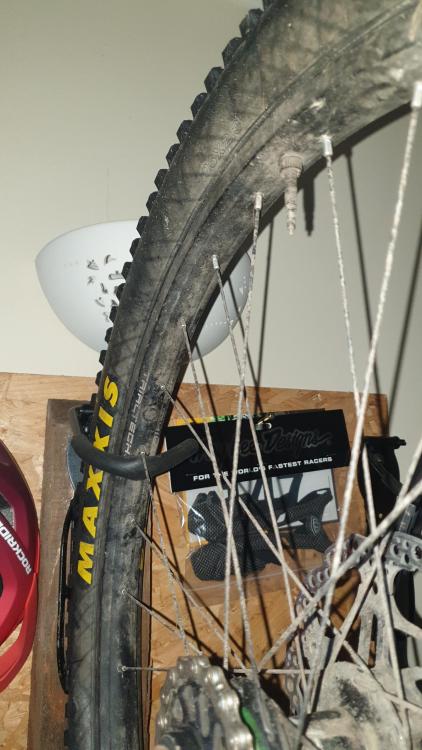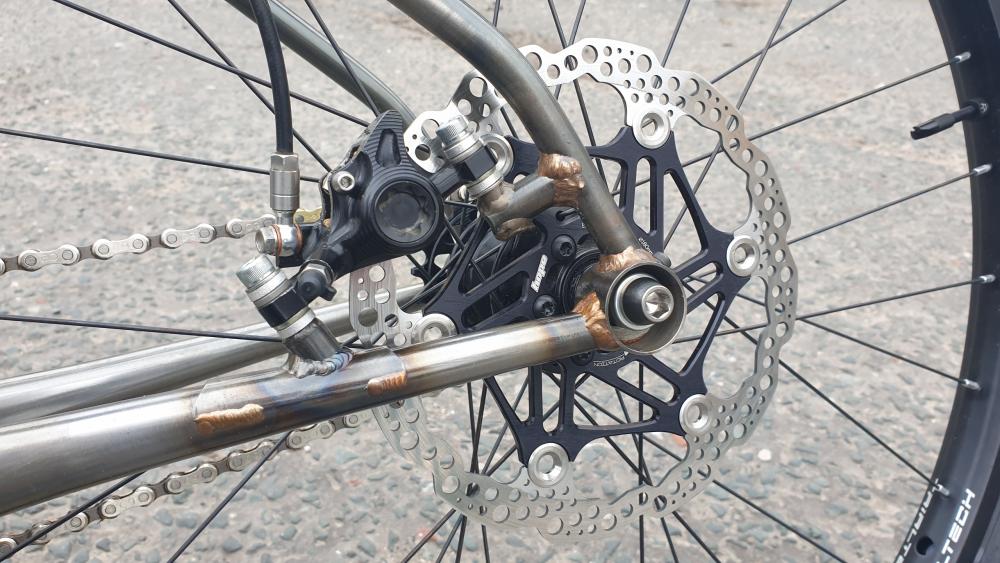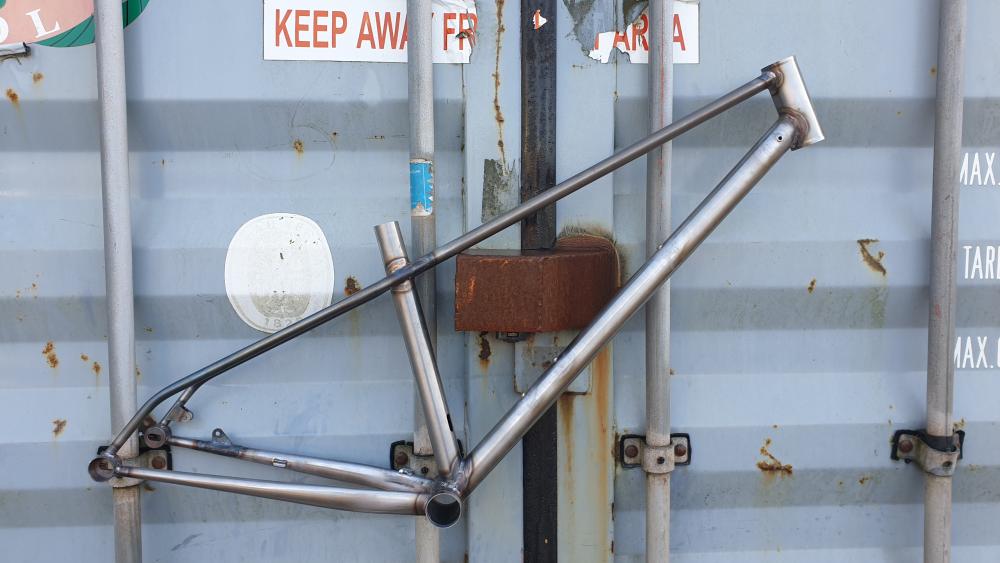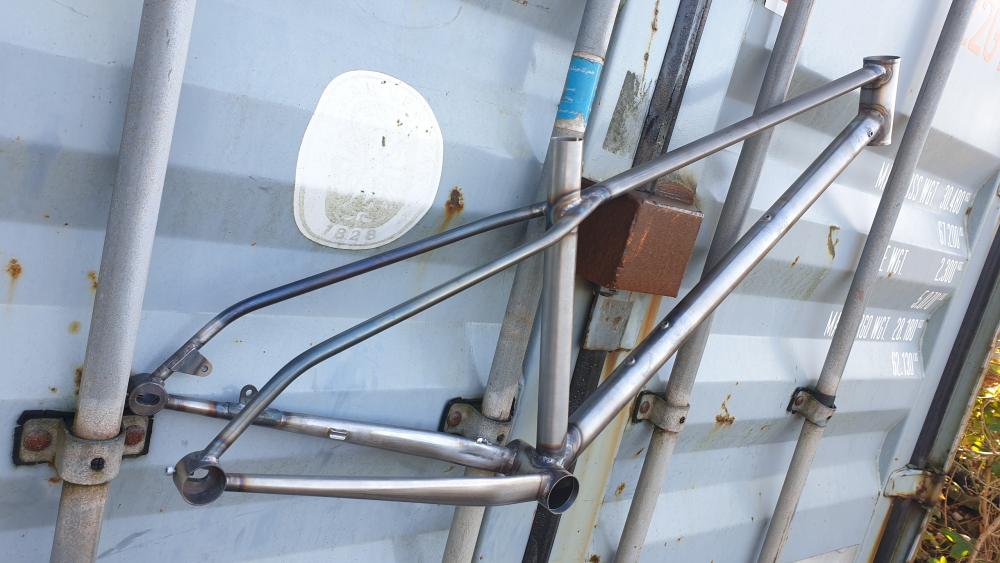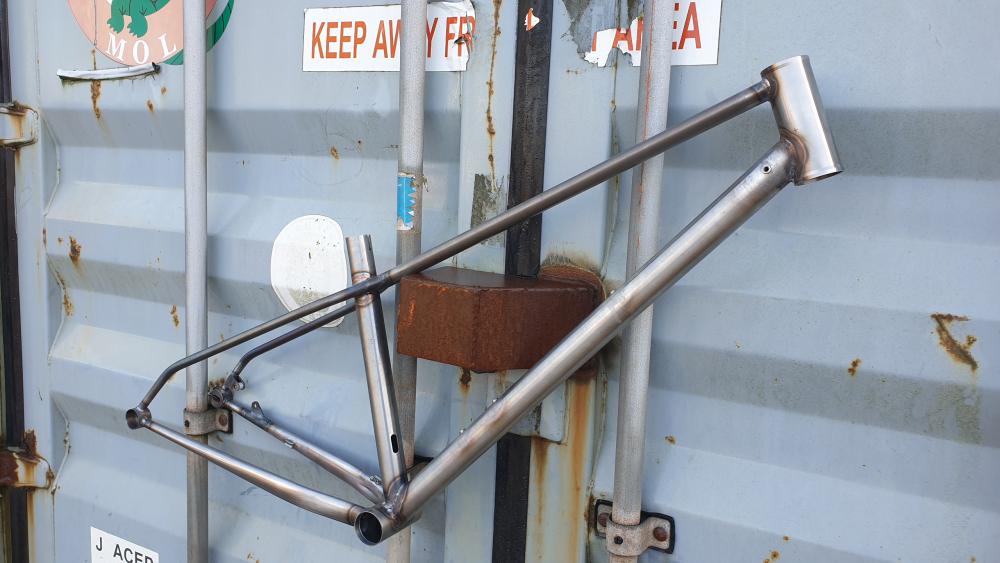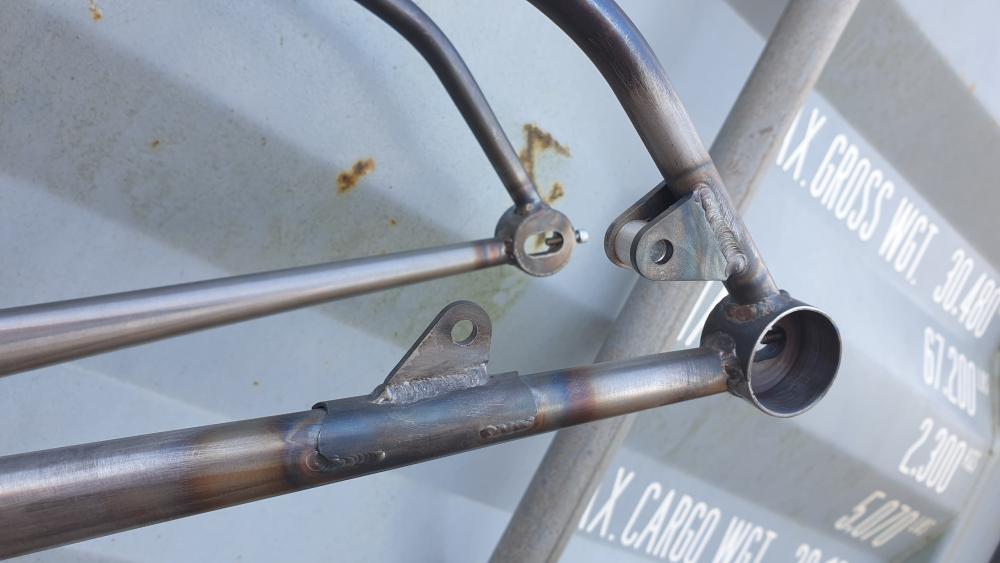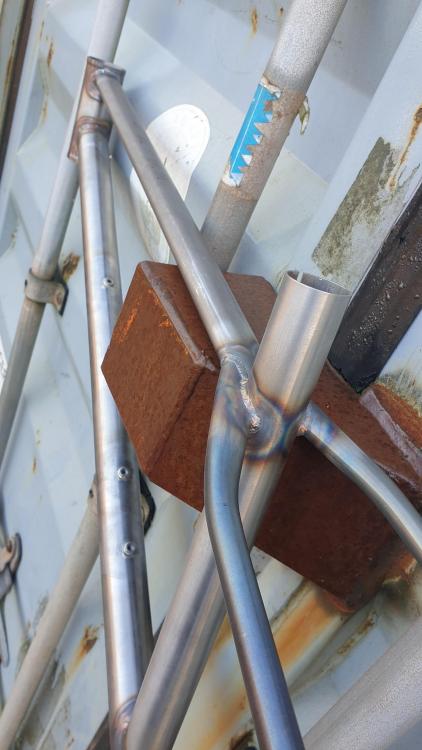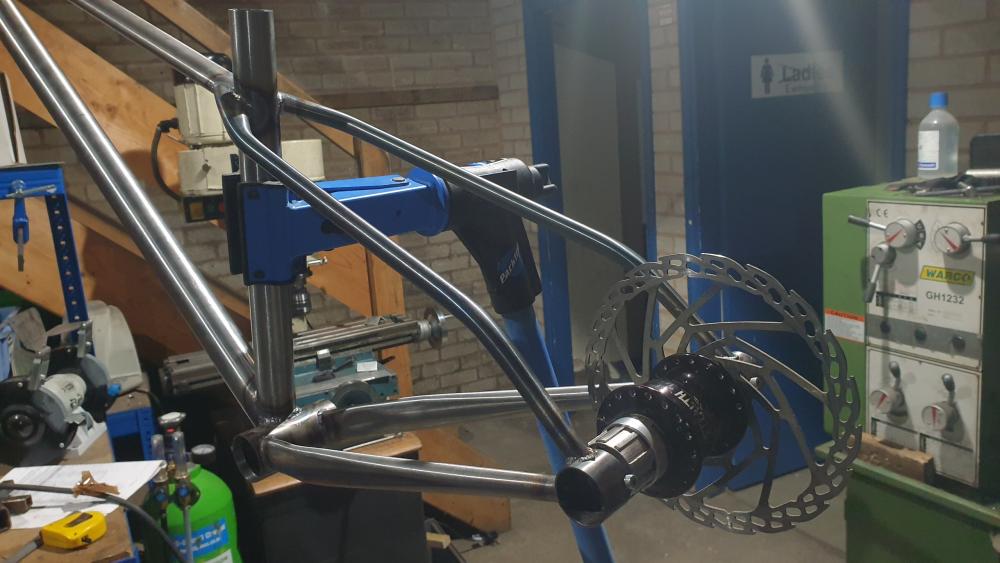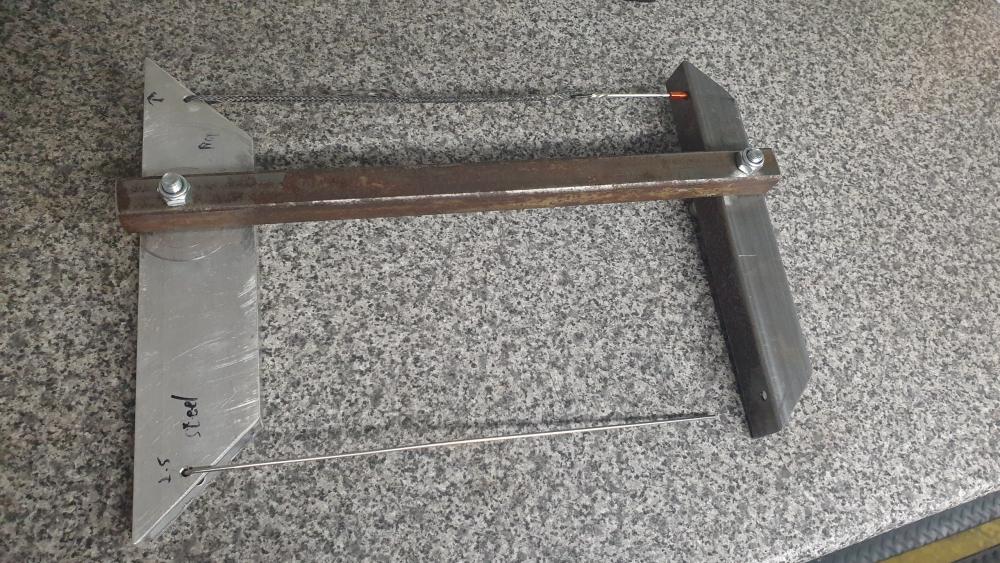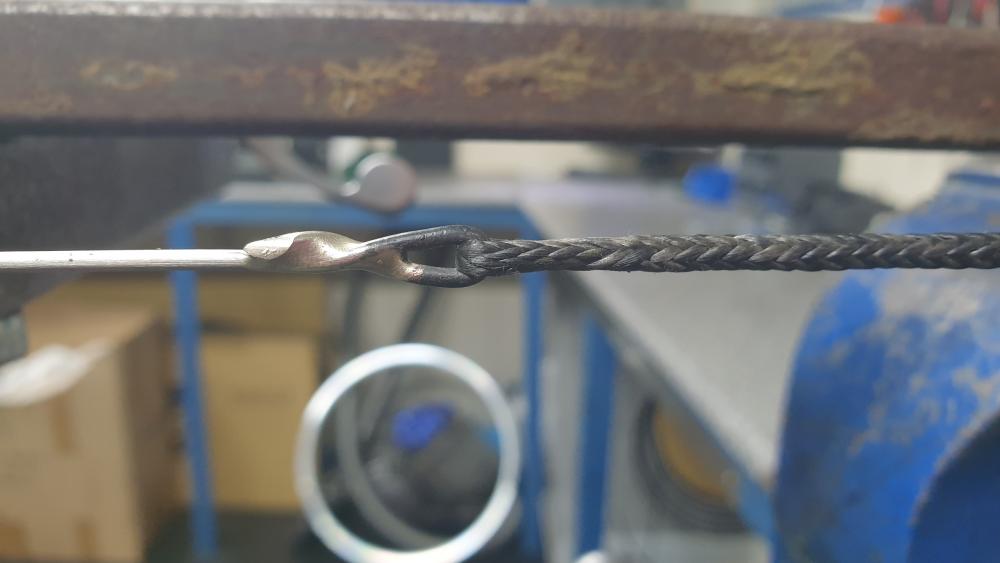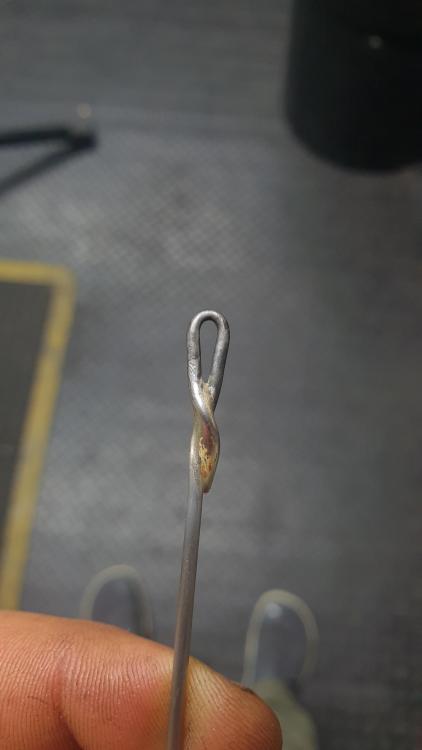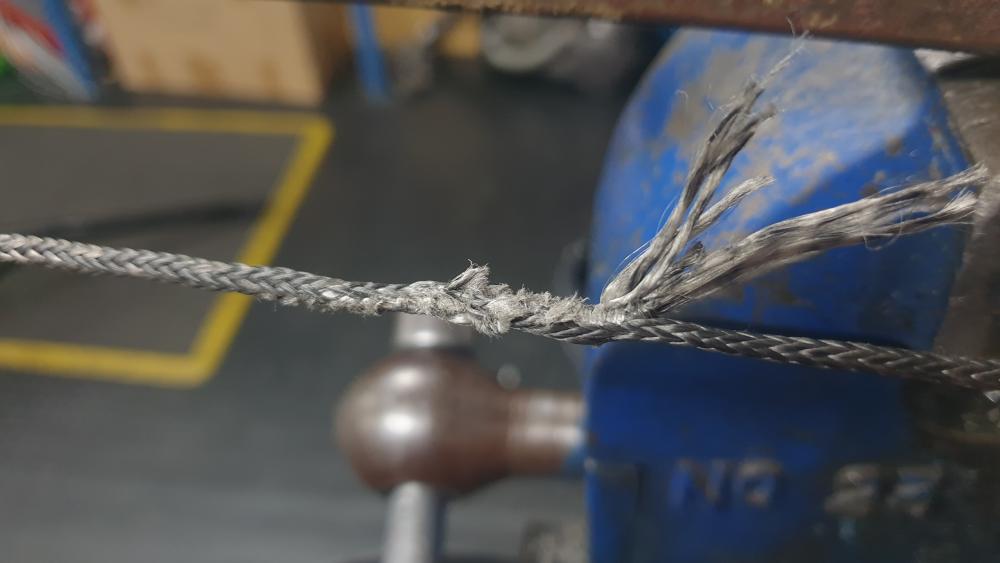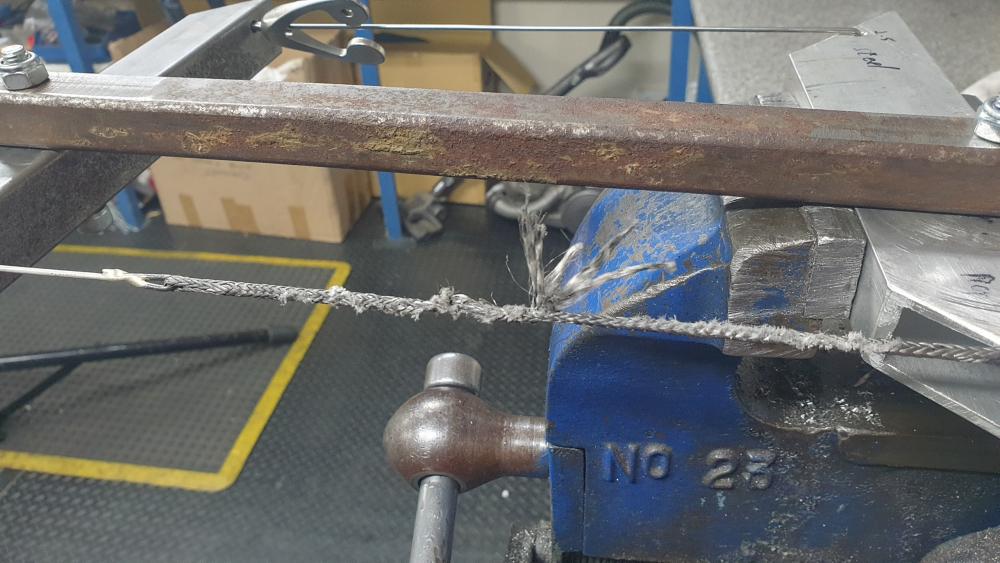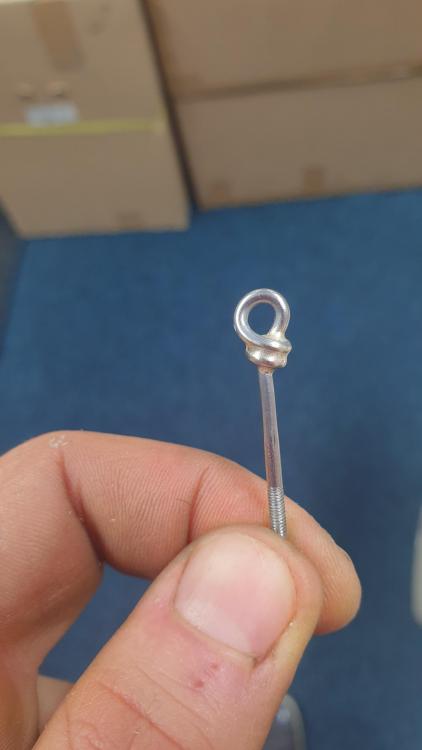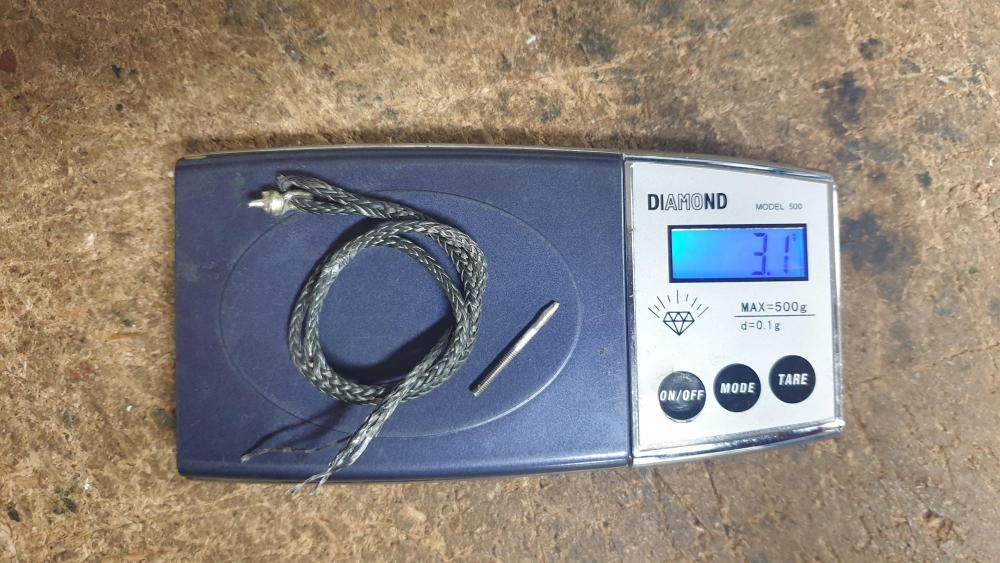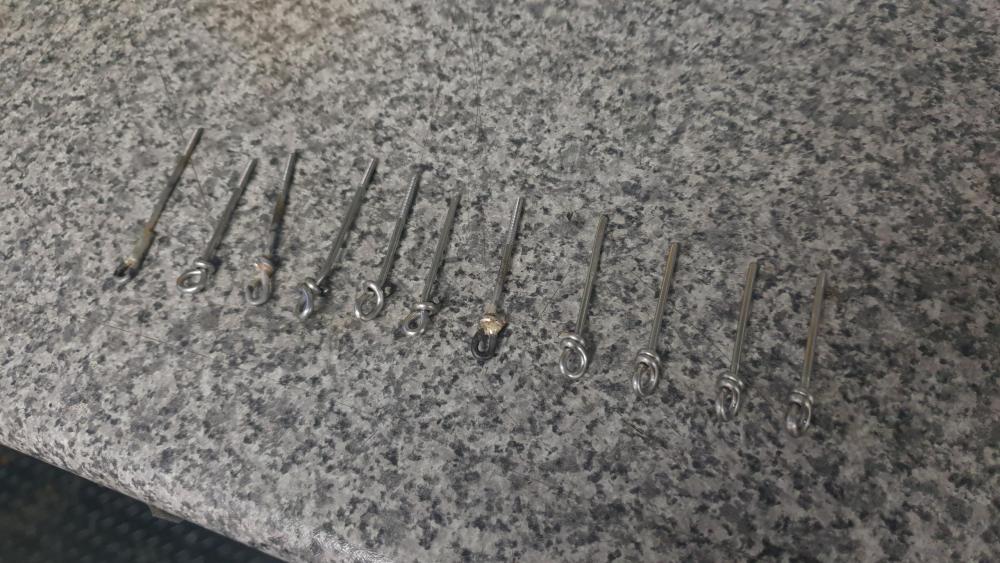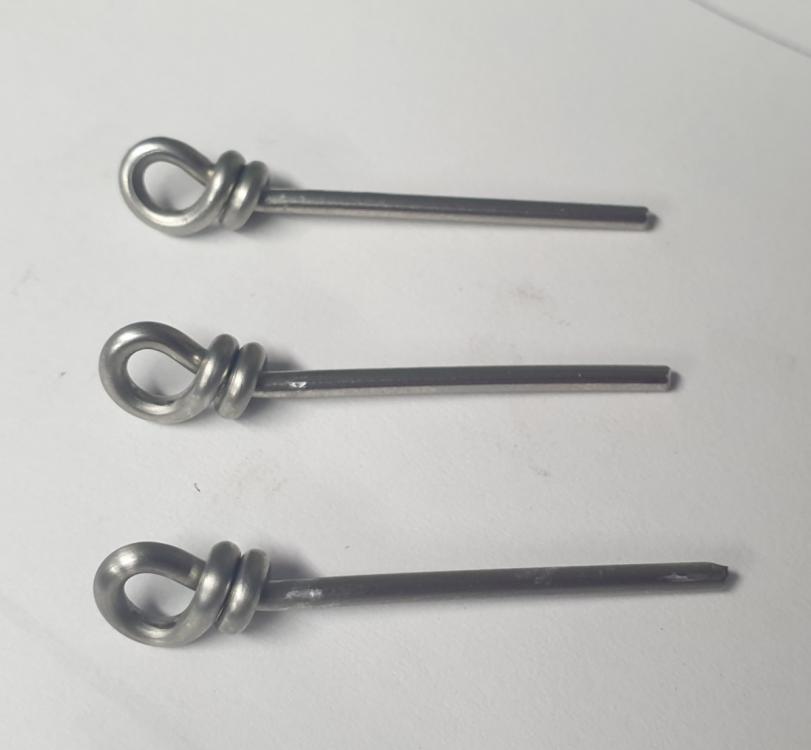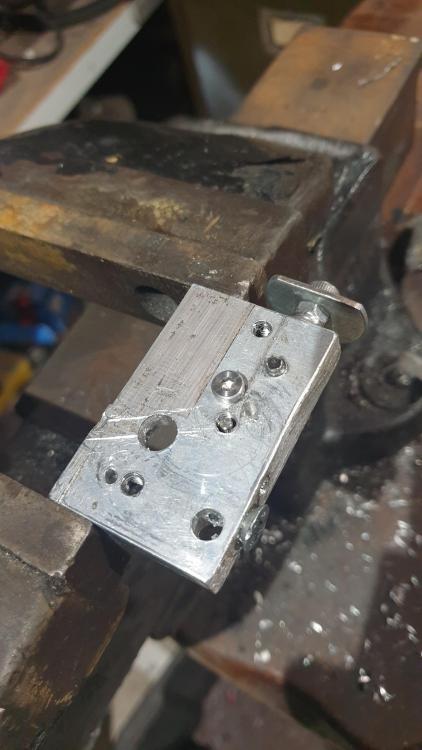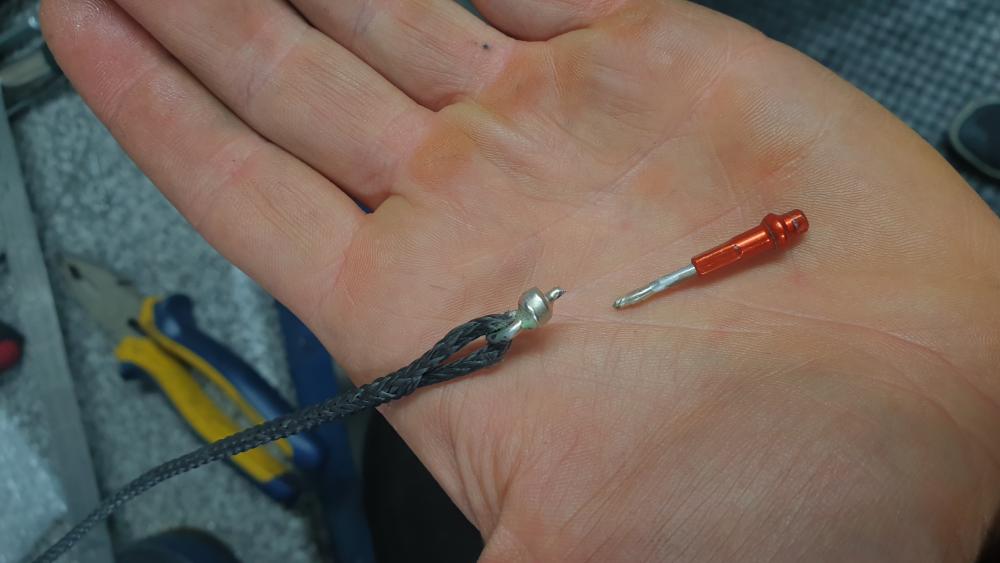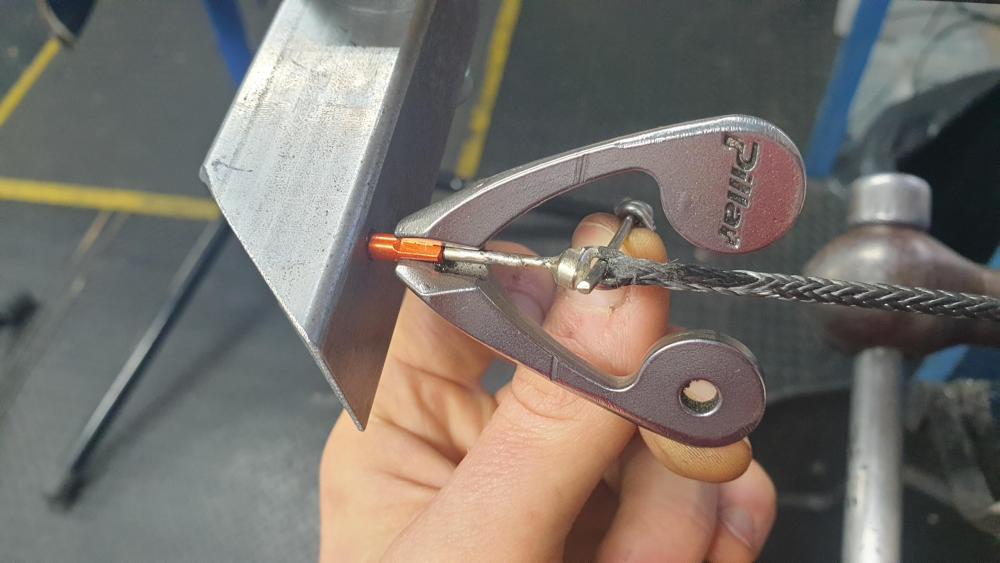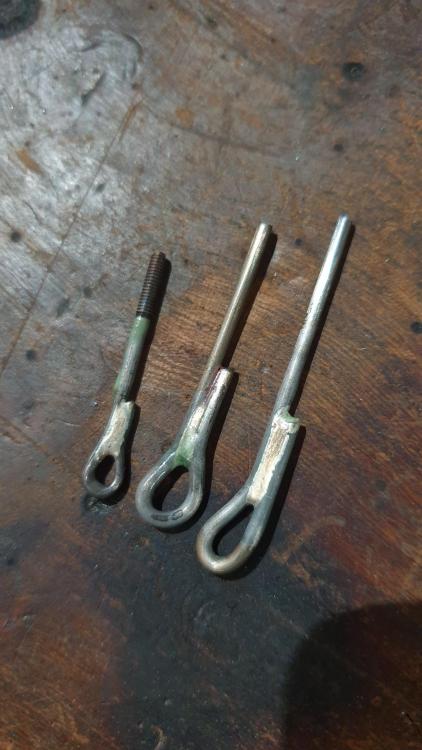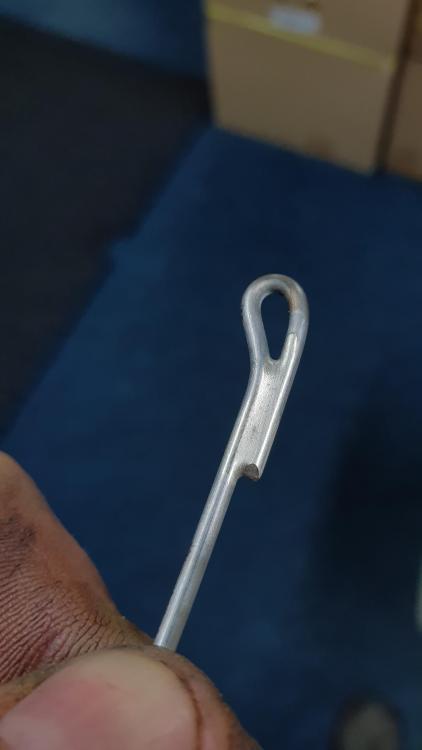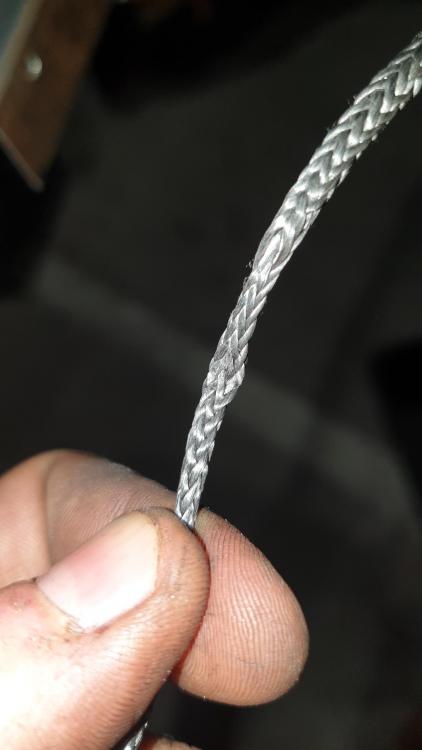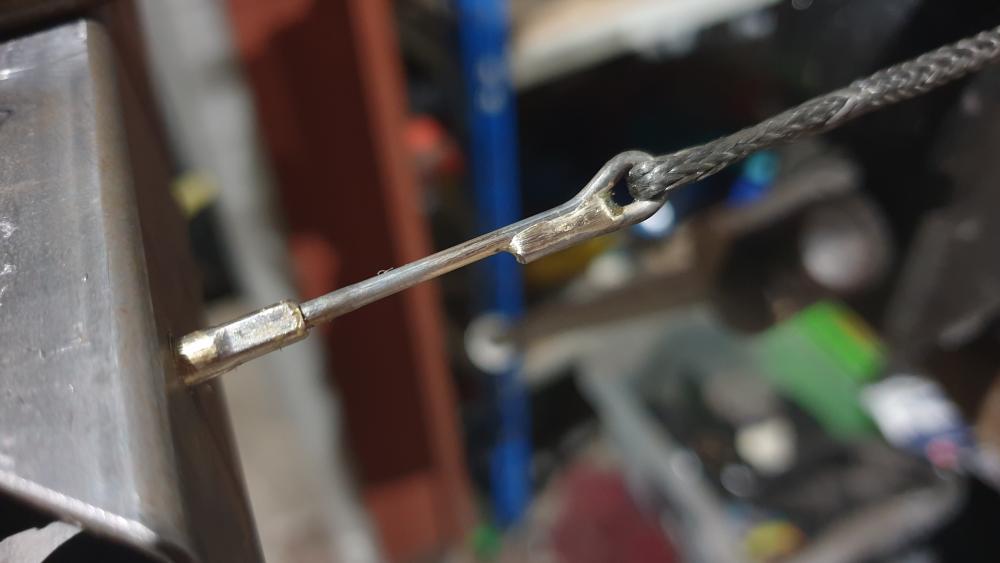
AdamR28
Members-
Posts
12366 -
Joined
-
Last visited
-
Days Won
197
Content Type
Profiles
Forums
Gallery
Everything posted by AdamR28
-
Aahhh, memory lane... Also just found out that Hans Rey is actually called Hansjorg. Mind blown. See also: sub 1.4kg frame in 1994. Double blown. Oh and check out those fork dropouts, adjustable offset / trail!
-
Nice work Dave! Looks really neat and using old knackered stuff is always a win I ended up taking a flap disc to my dropouts and they came out nicely. Just a little shaping to break up the industrial look... Then I lobbed some paint on. Its impossible to get a good representation of the colour indoors using a phone, but its an orange clear coat over a coarse metal flake base. Need to order another can to finish off the orange, but I'm looking forward to seeing what its like in sunlight once the lacquer has been applied. In theory should be like this...
-
I have (this is a front V1 but they are all the same in this respect). Drilled a new valve hole for Presta, glued the join.
-
Good call! May even get away with just wrapping a layer of tape around and using that as a cut line... we'll see tomorrow. Always fancied it on the old frame but never got round to it.
-
Yeah man. Did the same sort of thing on a previous frame and it's worked out well. In some cars they do similar things - such as use the engine block itself as a 'stressed member' (eg. effectively part of the chassis) - so I figured if the caliper has to be there anyway it might as well do two jobs... Thanks I had actually. Not sure how I'd do it neatly... perhaps a 1mm slitting disc in the grinder, then tidy by hand. One to ponder this evening!
-
New frame, ready for paint. Reynolds 853 front end, 631 head tube, Columbus stays, home made dropouts. Came out at 1.98kg, which is very light for a modern steel 29er.
-
Good news! We all have brain farts like that sometimes! Here's one of mine from yesterday that nearly caused enormous trouble...
-
Nice work - should do the job perfectly! I have a few 6 Bolt 44mm PCD sprockets kicking about if you want them. Probably got 20T and 18T at least.
-
Sorry guys, been busy with another part of the same project... but I have started on the spoke-making jig. Spoke progress will resume once the frame is finished, unless I get annoyed / bored with it in which case I'll come back to the spokes for a bit! Full build thread here: https://www.mtbr.com/threads/diy-steel-29er-singlespeed-frame-build-arse-29er.1196810/
-
Ceeway if you're getting a full tubeset - loads of choice, good service! https://www.framebuilding.com/ Bear Frame Supplies just for head tubes and BB shells: https://bearframesupplies.co.uk/ I've got a couple of spare (bought for practice welding but didn't use them in the end) ~600mm long, 0.8mm wall, 28.6mm OD 4130 tubes if any use - only cost me about £8 so happy to move them on at that price. PS: http://www.bikecad.ca
-
Welcome to the world of even more fun and less maintenance @monkeyseemonkeydo I started on 32:20 but now on 32:18. Most people say 32:16 is a good place to be, but not sure if that is bravado! This is with 26" wheels. General rule is to add 1 tooth to the rear for 650b, 2 teeth for 29er. Its pretty hilly round here, every ride is more than 1000ft of climbing per 10 miles to give you an idea, but everything is cleanable if you do your best BMX race start impression on the very steep stuff You need a bit of time to retrain your brain mostly - at first it feels really weird grinding away at super low cadences, but eventually you learn that you can grunt it out. Trials helps a lot I think, as you have good low speed balance while standing up and good core strength to keep the bike pointing where you want it to. Momentum is everything and pedal strikes are killer. Higher speeds - I find it absolutely fine 99% of the time and keep up with geared mates with no issue. You learn to carry momentum better on the flatter / slightly downhill stuff, and you'll find yourself sprinting at short sharp climbs rather than going into autopilot and shifting up the cassette. The only time I find it a bit lacking in speed is really fast, smooth, slightly downhill sections - you simply can't spin your legs fast enough to get any drive. A small trade-off IMO. I love it so much I'm building another (with big dirty wheels this time)! https://www.mtbr.com/cdn-cgi/image/format=auto,onerror=redirect,width=1920,height=1920,fit=scale-down/https://www.mtbr.com/attachments/screenshot-2021-11-15-at-19-13-21-luddite-ss29-png.1956965/ https://www.mtbr.com/cdn-cgi/image/format=auto,onerror=redirect,width=1920,height=1920,fit=scale-down/https://www.mtbr.com/attachments/20211116_061444-jpg.1957113/ https://www.mtbr.com/cdn-cgi/image/format=auto,onerror=redirect,width=1920,height=1920,fit=scale-down/https://www.mtbr.com/attachments/20211117_170334-jpg.1957326/
-
I think it's correct to say the vaccine does 'work' in terms of reduced transmission - the reading I've done from sources I trust seem to all come up with this conclusion. By improving immune response this will reduce significance of symptoms, eg. less coughing, so less transmission. However... As Anal alluded to, I believe there are still a significant number of vaccinated people who are 'worse' spreaders than many unvaccinated citizens though, whether that's their lifestyle choices, state of health or their feeling of invincibility due to having been jabbed. In this case, I don't think it's fair or reasonable to impose isolation on a group of people simply because they have not been 'fully vaccinated' or don't show 'signs of increased immune response'. Availability of immune response is a moot point if you don't need to use said response. It's like saying we all need to go around wearing a full face helmet in case we walk into a lamp-post. Examples... Person A got Covid last year and nearly died, but now is double vaccinated, has a BMI of 35, aged 55, lives with partner and 3 kids all of whom are at high school, works in an office with 100 people, shares a desk with 3 others, goes out for a meal twice a week then to the pub after with at least 4 mates, takes the tube to work, nips to Subway every lunchtime for food. Even with '73% reduced risk of transmission' and '60% reduced risk of hospitalisation' (or whatever the latest version of the stats says.........) I would place good money on Person A having an increased risk of transmission and hospitalisation over unjabbed Person B who is 28 years old, lives alone, has never had Covid, works in an office with only 2 other people, never goes to the pub, goes out for a meal once a month with their partner, rides a bike 3 times a week on the moors, has a BMI of 23, commutes by bike or car and does their food shopping online. I know there are too many variables to calculate a 'risk factor' per person, but to me it should be innocent until proven guilty rather than the other way round.
-
I'm not sure where you would draw the line though. Resting heart rate of under 50? BMI of under 23? Able to run 3 miles? Never go to the pub or a shopping centre? All of these would be viable indicators of reduced risk compared with the average citizen, IMO.
-
Have had a couple of rear Super Deluxe before, one on an Orange Four (obviously single pivot) and another on an Identiti Mettle (linkage), no problems / nothing to report on either. Are you already maxed out on volume spacers?
-
More faffing... Decided I didn't like the twisted spoke in the end. Felt like it was a bit brutal on the spoke when forming the eye, and the thick to thin section felt wrong (stress riser). Had a mini failure at just over 200kg where the solder started to 'peel' away too. I hadn't prepped the spoke at all (normally I would sand it down with 120 grit and degrease with acetone) which is the likely culprit, but belt and braces... Ended up making a hybrid of the 'in line' eye from way back and the twisted one, which puts the silver solder more in shear than tension, and ensures the two lengths of spoke are touching for a good distance to allow proper soldering. Decided to go straight for a destruction test, so loaded the bugger up... BANG. Sapim spoke snapped at the first thread. This was at just under 150kg, so 300kg in the rope one. The rope held fine but the eye stretched a bit, necked down to 1.4mm from 1.8 at the very bottom. If any of these spokes see 150kg even momentarily during their life I'll be surprised, so that'll do me. Then went on the destruction testing warpath, and loaded one up to 115kg and attacked it with a file. The failure is actually quite boring, the strands just gradually detangle and the bury splice slips. At this point I'd put 20-25 firm strokes across the rope with a coarse round file, and it was still holding over 80kg. So I'm happy the odd rock strike won't cause issues! Need a new jig for the new eyelet type now...
-
Tempering could be possible, I need to read up on that... I did just test another soldered eye though and it was absolutely fine. I think the main problem was me being a butcher! I tried a straight spoke early days with a long rolled thread and no glue - it pulled out easily. I also tried gluing with the same rolled thread: CA pulled out (perhaps didn't get it soaked enough), epoxy 'skipped' on the rolled thread and then the rope started breaking at the end of the spoke - I'd even tapered it to reduce the stress riser. I am talking 200kg+ here though. One thing that might make enough difference, my rope is 2mm (though it measures at 2.2mm). The stuff Berd use is 1.5mm (have read that this measures up at 1.8mm), so perhaps the 'clamping' of the finger cuff trick is higher with the smaller rope. The jig... probably easier if I take a video, ha. It actually happens without any grunting somehow! You're not wrong about the nice finish of the silver solder. A lovely contrast to anodised aluminium and high tech rope.
-
I do! (Well, sort of, it's just a bag of bits now). It was just the rear one. I seem to remember either the bonding failed between the shell and flanges, or the carbon sleeve split - I think the 200mm rear disc I was using at the time didn't help things!
-
Haha. Well, thanks... I don't think this is out of the realms of a regular DIY-er, just I tend to go a bit to far with these things. More nerding here (Berd's patent): https://pdfpiw.uspto.gov/.piw?PageNum=0&docid=10661598 - they do use cyanoacrylate to glue the spoke into the rim end. Scary. @Ali C, the patent only covers the USA and it would make an interesting video... just sayin'...
-
Ha. Thanks dude. Pretty chuffed with that one considering how f**ked the jig looks. I started at 210kg then just kept winding - it started to feel a bit weird almost immediately so I don't think it got much over this load. One of these spokes has a claimed max load of ~330kg. So I think there might be an issue due to excessive heat... I think I've been getting the spoke up to about 800-850 degrees based on the colour - the solder should start to flow around 650 apparently. So I'm wondering if doing it in the dark might allow me to control the heat input a touch better. I'm only using a basic B&Q blowtorch but those small sections heat up fast! Another factor might be how short that bit of steel spoke is. Any wind-up will be concentrated at the 'root' of the soldered join, whereas normally it would obviously have the whole length of the spoke to take up any twist. I was way over the tension I'll build the wheels though, and didn't use as high quality lube on the threads and under the spoke head as I normally do, so hoping it'll be ok. Perhaps I should do another and wind if back and forth to 'normal' spoke tension (about 100-120kg) a few times to see what happens. Oh, and... for weight weenies. A Sapim Race (2.0-1.8-2.0) is 5.8g, Sapim Laser (2.0-1.5-2.0, same base spoke as a CX Ray) is 4.4g. Makes weight savings of around 150g per bike over the Race spokes.
-
Changed tack a bit on the eyes... Turns a spoke into one of these in just over 30 seconds. Blob of solder, away we go! And a max load test, just for you @forteh... This was a really old and haggard section of rope too - a bit frayed from being re-used at least a dozen times, and the splice burying was way too short. Still, the spoke necked down to 1.6mm from 1.8 and snapped before the rope snapped or the splices slipped. Time to sort out a batch of eyes and get cracking on making spokes!
-
[HELP] How do I do these two moves? (Video clips included)
AdamR28 replied to Rip's topic in Trials Chat
1. Both. Pushing your arms away helps to lift the bike. 2. Maybe called a shunt? Depends on which riding group you're in, ha. Anyway the key is a short dab of pedal pressure. Basically just long enough to push off to jump, don't 'linger' on the pedal stroke. Again think about pushing arms away as well as lifting legs. Front wheel goes onto the obstacle as little as possible. When you get the timing it can be done off the corner instead of the top. -
Not sure about the deburr, but I'm doing it anyway to be certain. I tried some glued spokes and wasn't really keen on the results. I would also then have to find a way to stop the spoke rotating while building, that didn't involve gripping it with mole grips or something equally crude. Then I remembered silver soldering! My first 3 attempts, straight after soldering / brazing, covered in flux. This is much less temperamental and a lot easier than welding, plus gives a much neater result IMO. Flux removed and scrubbed with wire wool. Love the way the silver flows! Checked the condition of the rope where it went through an eyelet. This had done 10x cycles to 140kg and a couple to 200. No fraying so I think that's acceptable. And finally, loaded up a soldered eyelet to 200kg, then have left it at 130kg for the weekend to check it doesn't fail.
-
Its no more fiddly. And looks a lot less of a bodge as you said. I think Berd do it the way they do to ensure customers don't have to do a splice, and it allows them to set the spoke length at the factory. I'll try soaking in superglue today as well then...
-
I looked at that... I think the torque from pedalling and braking might be affected significantly as only one of the pair would be pulling tangentially then (hard to explain). Also knotting this stuff really ruins the properties - can't remember exactly but it reduced breaking load by at least half! I think Berd have put a lot of time and effort into these. All the conclusions I'm coming to seem to match what they've done...
-
Yeah thats the plan, ish, though one end of the jig will need to be the hub of course! I think I'll add a good amount of load to the splice / bury at the hub end before making the rim end. Should bed in the splice sufficiently to make any stretch consistently elastic. At the moment it looks like I'll be able to figure out stretch amounts using the jig I made. The idea behind using the double square nipples is so you have an extra 2mm to play with too, so that will help out a little. If I get time today I'm going to try rolling a long thread onto a spoke, coating it with epoxy, sliding the spoke straight inside the rope, adding a coat of epoxy to the outside and then heatshrinking over the top of the lot. Hoping this will create a high enough friction - if only mechanically rather than by adhesion - to allow much easier building and spoke length 'adjustment' than having two buried splices.



